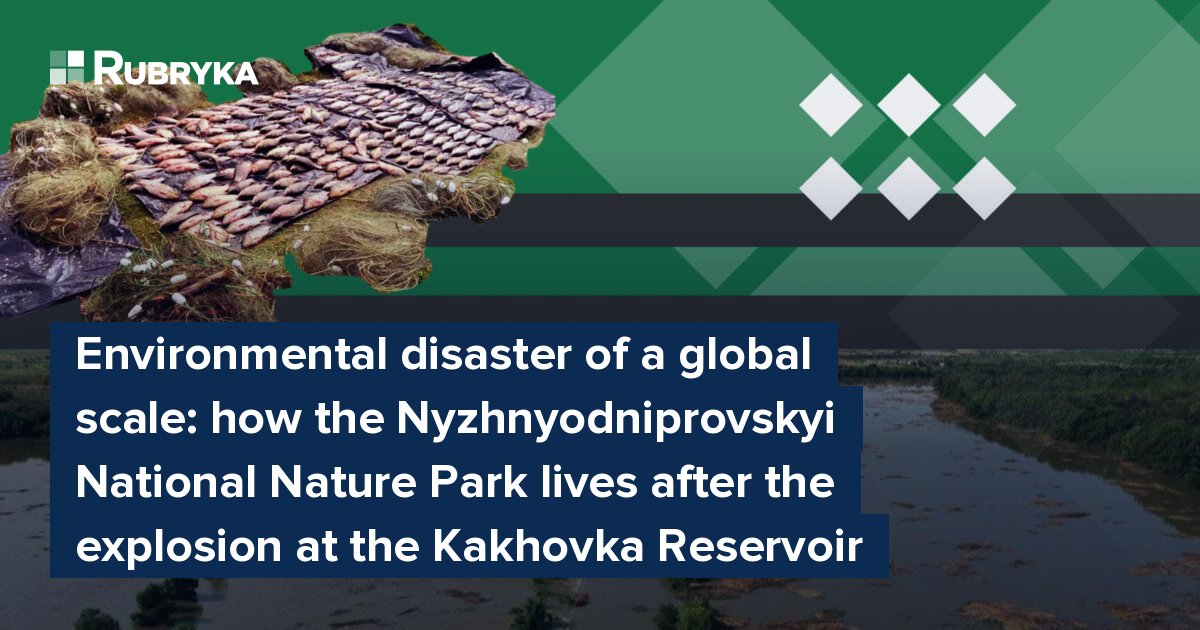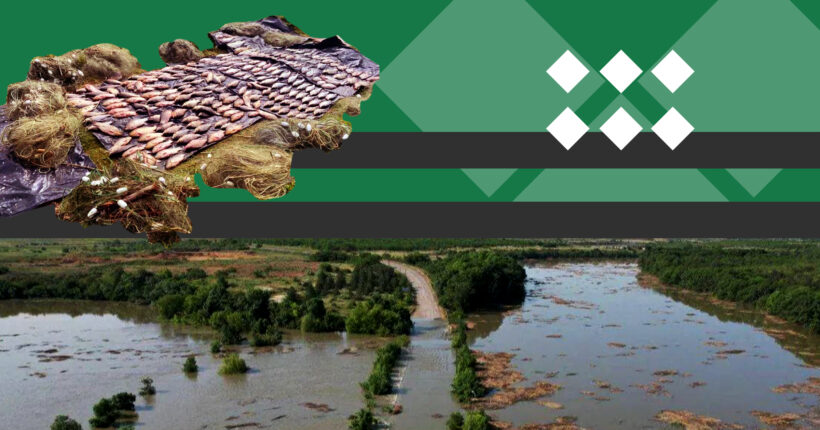
What is the problem?
Vast thickets of reeds, heathers, and boundless expanses of the Dnipro River, floodplain forests, islands, creeks, and limestone slopes — all this is located in the Dnipro delta, the width of which in some places reaches 15 kilometers.
Here, in the reeds, colonies of herons, thousands of warblers and hundreds of swans hid. Many birds of prey hunt in the floodplain forests, and along the steep bank in the forest mountains, the European roller builds its burrows and surprises bird watchers with its bright colors. Meeting pink pelicans will be an absolute aesthetic pleasure. When the Dnipro, on its way to the Black Sea, flows into the Dnipro – Buh estuary, majestic rocks, better known as the Kherson Mountains, open incredible beauty to the eye.
Before the war, all this beauty could be seen on the right bank of the Kherson region, just below Kakhovka. In 2015, this was recognized as the Nyzhnyodniprovskyi National Nature Park. This is the first of four natural parks located downstream of the Dnipro from Kakhovka. As you can guess, this park suffered the most after the Russian terrorist attack — the blowing up of the Kakhovka hydroelectric power plant dam.
Rubryka found out how the park existed during the year of the war, what challenges the conservationists had to face, and what we will see when we can return to Nyzhnyodniprovskyi NPP after the end of the war.
Nyzhnyodniprovskyi NPP during the year of the war: thievery and collaborationism
From the beginning of March until November 11, 2022 — the day of the liberation of the Kherson region — the park was under Russian occupation.
During this time, the enemy stole and destroyed everything accumulated during the park's seven years of activity. These are cars, watercraft, computer and office equipment, cameras, laboratory equipment, a specialized library, collected herbarium materials, and documents. Currently, the institution primarily needs emergency vehicles, speedboats, printers, microscopes, cameras, a digital weather station, a freezer, generators, pumps, and hoses. All this costs tens of millions of hryvnias and years of painstaking work of the park employees devoted to the conservation work, which cannot be calculated in monetary terms.
Another blow to the park was delivered from behind. Dmytro Kirin, deputy director of the national park, tried to organize the work of the nature protection institution under Russian jurisdiction and forced employees to obtain Russian passports. However, help came from Ukrainian environmentalists, the UPG non-governmental organization, which appealed to the Security Service of Ukraine and the Ministry of Environment. At the time of publication of the article, there was already a court verdict — the collaborator was sentenced to 15 years in prison for treason.
However, losing the material base and collaborators is far from all the park's problems. The hostilities, combined with the fires they caused and the greatest man-made disaster of the 21st century, probably destroyed all living things that remained after the withdrawal of the Russians.
About 7% of the park turned into ashes
As the National Park announced in the winter, more than 5,000 hectares of Nyzhnyodniprovsky Park were destroyed by enemy shelling in the first year of the war. Animal and plant life suffered, and more than 5.5 thousand hectares of the park out of 80 thousand were covered by fires. It is important to note that regular fires in the floodplains, caused by enemy shelling, cause irreparable environmental damage, eliminating many animals and plants on the park's territory.
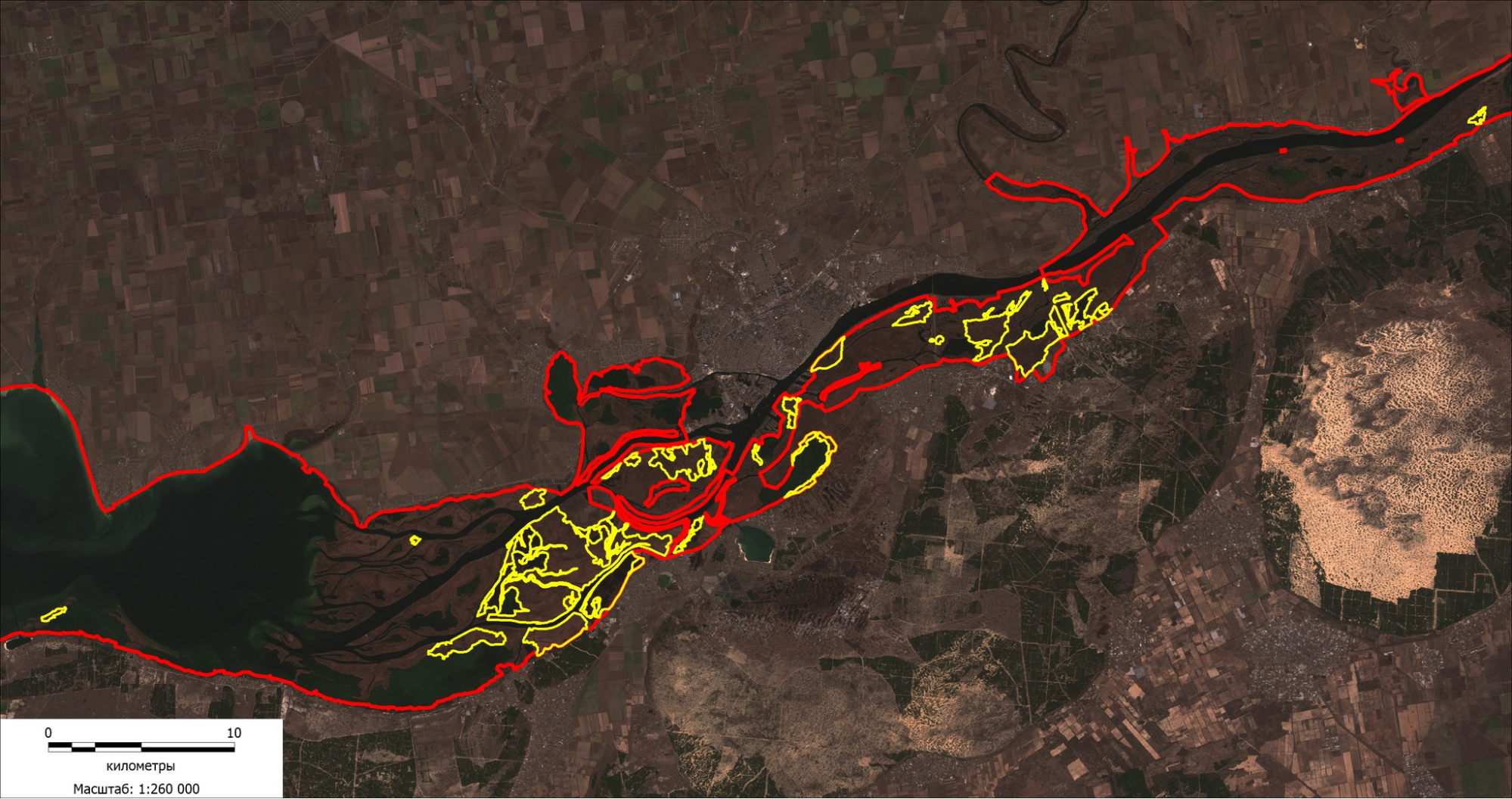
A satellite image shows the area of the Nyzhnyodniprovskyi NPP that was covered by fires during the first year of the war. The park's borders are marked in red on the images, and the territory of the fire is marked in yellow. Source: Facebook page of the park
It was very difficult to tame the fire in such areas even before the war, but now it is completely impossible. As well as to fully assess the extent of the damage caused to the ecosystem of the Kherson region by the Russian military. However, even without accurate data, scientists understand that restoring the protected area will take a lot of time and effort.
Sometimes we have to fight even those who were supposed to be on our side: poaching during war
Active hostilities in the Kherson region are destroying the unique ecosystem, but in addition to the occupiers, enormous environmental damage is caused by poachers who are not afraid of danger.
To prevent this, the police, together with National Park employees, regularly conduct raids and seize hundreds of meters of poaching nets and dozens of crayfish traps, and the damage caused by poachers is estimated at millions of hryvnias.
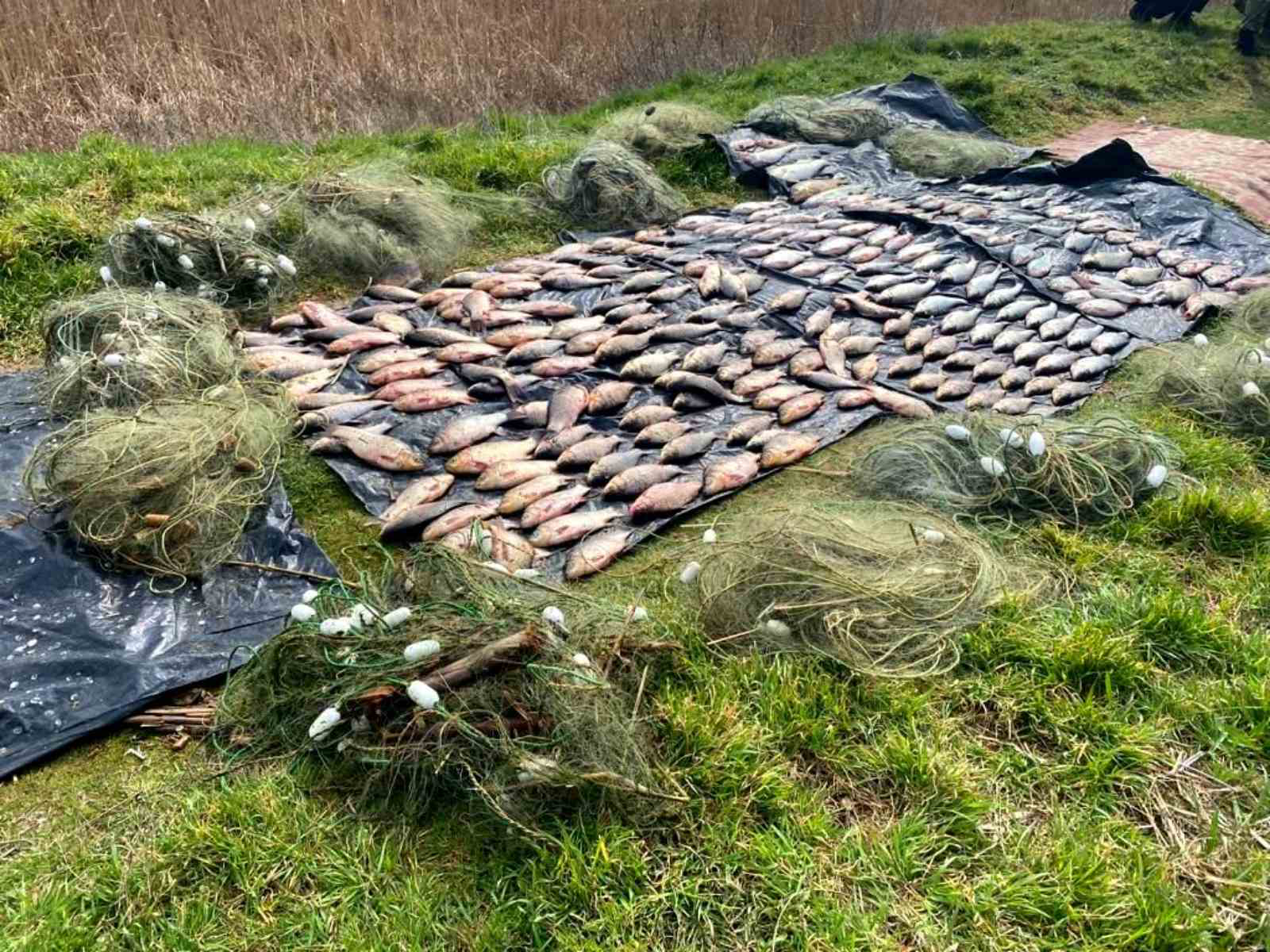
The employees are counting fish seized from poachers in the NPP Nyzhnyodniprovskyi. Source: Facebook page of the park
Explosion at the Kakhovka HPP and complete flooding
The biggest blow to the park was, of course, the catastrophic flooding. On the day of the explosion of the Kakhovka HPP dam, the park reported that 100% of the territory of the Nyzhnyodniprovskyi National Nature Park was underwater.
As the park director, Oleksii Chachibaya, said, the rise in the water level led to the mass death of representatives of the animal world and unique plants. There are 60 species of birds under the park's protection, a large percentage of which nest on the park's territory. According to the latest data, 44 fish species are registered within the park, particularly rare species that are disappearing. Currently, the presence of 15 species has been recorded, including the valuable sturgeon. As for the flora, approximately 63 species of higher vascular plants were affected, of which 30 are included in the Red Book of Ukraine.

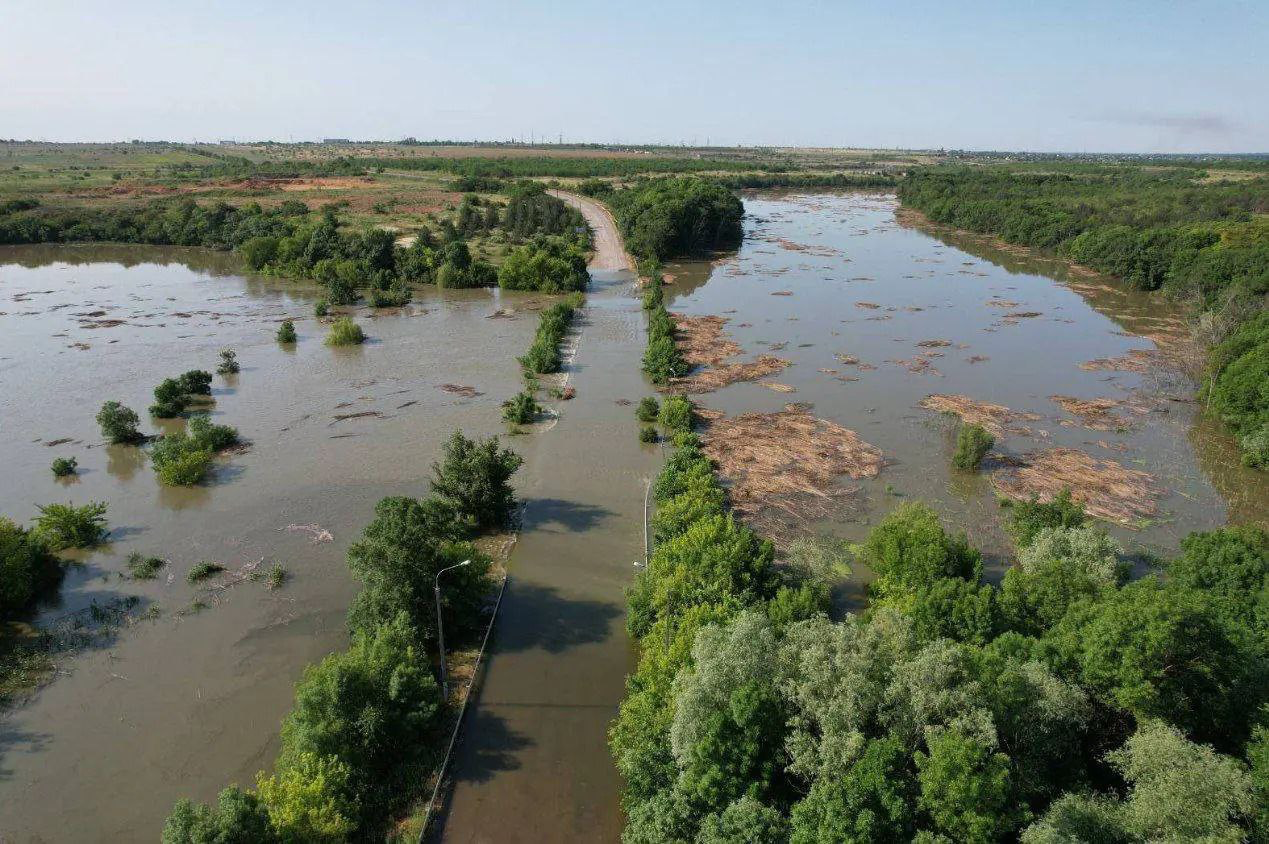
It is extremely difficult to record all the consequences at the moment because the territory of Nyzhnyodniprovskyi NPP is under shelling. Source: Facebook page of the park
According to preliminary calculations, due to the explosion of the Kakhovka HPP, the losses caused to the Nyzhnyodniprovskyi park are approximately ₴46.5 billion. The occupiers caused an ecological catastrophe of a global scale, and it is extremely difficult to record all the consequences at the moment because the territory of Nyzhnyodniprovskyi NPP is under shelling.
What is the solution?
Continue to work despite all obstacles
Before the war, employees of Nyzhnyodniprovskyi Park annually participated in activities aimed at improving the state of the environment, cleaning water sources, greening territories, preserving protected objects, and spreading ecological knowledge. Even a full-scale invasion and occupation could not create obstacles to these plans.
Twice — in 2022 and this year — in martial law conditions, the Day of the Environment, which was celebrated in the National Park every April, could not be held in the usual, traditional format. Not only due to hostilities, there were many dangers in the territory of the National Park: mined forest strips, coasts of rivers and seas, and even park zones. Unfortunately, this problem will remain with the park for more than one year, but they continued to involve people and employees in nature conservation activities anyway.
The park team spent this day in different parts of Ukraine for a common cause — they cleaned the territories where they are now and held educational activities through Zoom conferences.
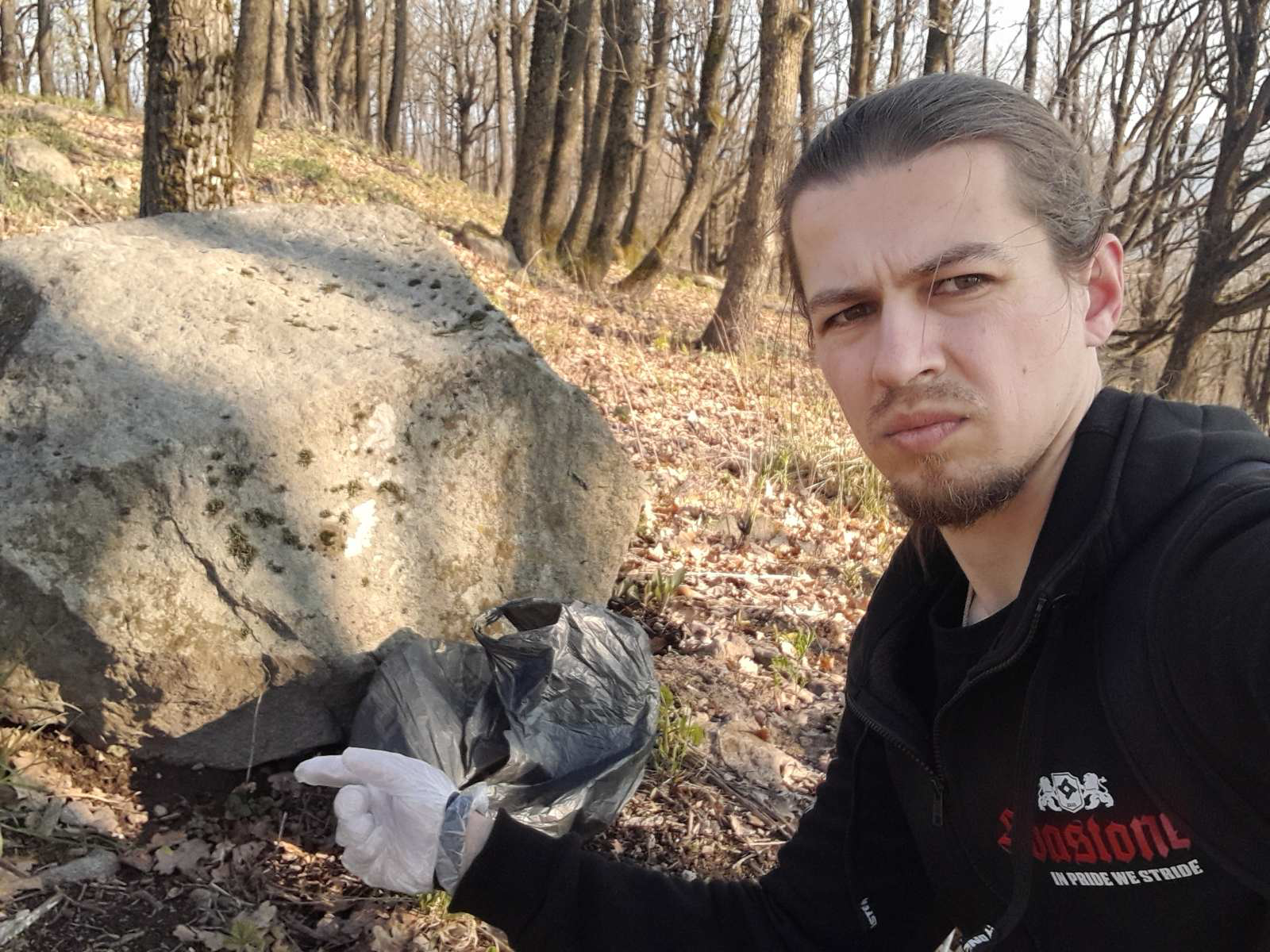
One of the Nyzhnyodniprovskyi NPP employees took a photo during the cleaning campaign. Source: Facebook page of the National Park
"No matter where we are, we should not forget that a clean environment begins with each of us — with the habit of not littering, with active participation in local communities and ecological upbringing of children," they say in the park.
7 million for the reconstruction of the park
Today, the primary task of the park is to restore the material and technical base to take effective measures to fix the crimes of the Russian army and restore the reserve's ecosystem.
The Nyzhnyodniprovskyi National Nature Park appealed to benefactors for help, and they responded to the call. For example, the Ukrainian animal rescue organization UAnimals has already transferred ₴7 million to the National Park.
Come up with a solution together!
The human rights and environmental protection organization Environment People Law (EPL) and the Bureau of Environmental Investigations have already announced the creation of the Models of Green Recovery: Kakhovka HPP platform. Here, new solutions for the recovery of the lower reaches of Dnipro after the disaster at the Kakhovka HPP should be worked out.
All those interested in the joint study of the explosion's impact at the Kakhovka HPP and the development of models of complex solutions are invited by EPL to fill out the questionnaire at the link.
"Unfortunately, due to active hostilities on the territory of the Kherson region today, we cannot pay due attention to these problems," they say in the park. "But the world must know about the threats to the environment and ecocide by the Russians in Ukraine in order to later make them answer to humanity for their crimes."
Therefore, one of the main tools in the fight against Russian aggression is the dissemination of information. The louder the voice of environmentalists will be now, the more significant the contribution to the restoration of all those who will hear this voice will be.
Newsletter
Digest of the most interesting news: just about the main thing



